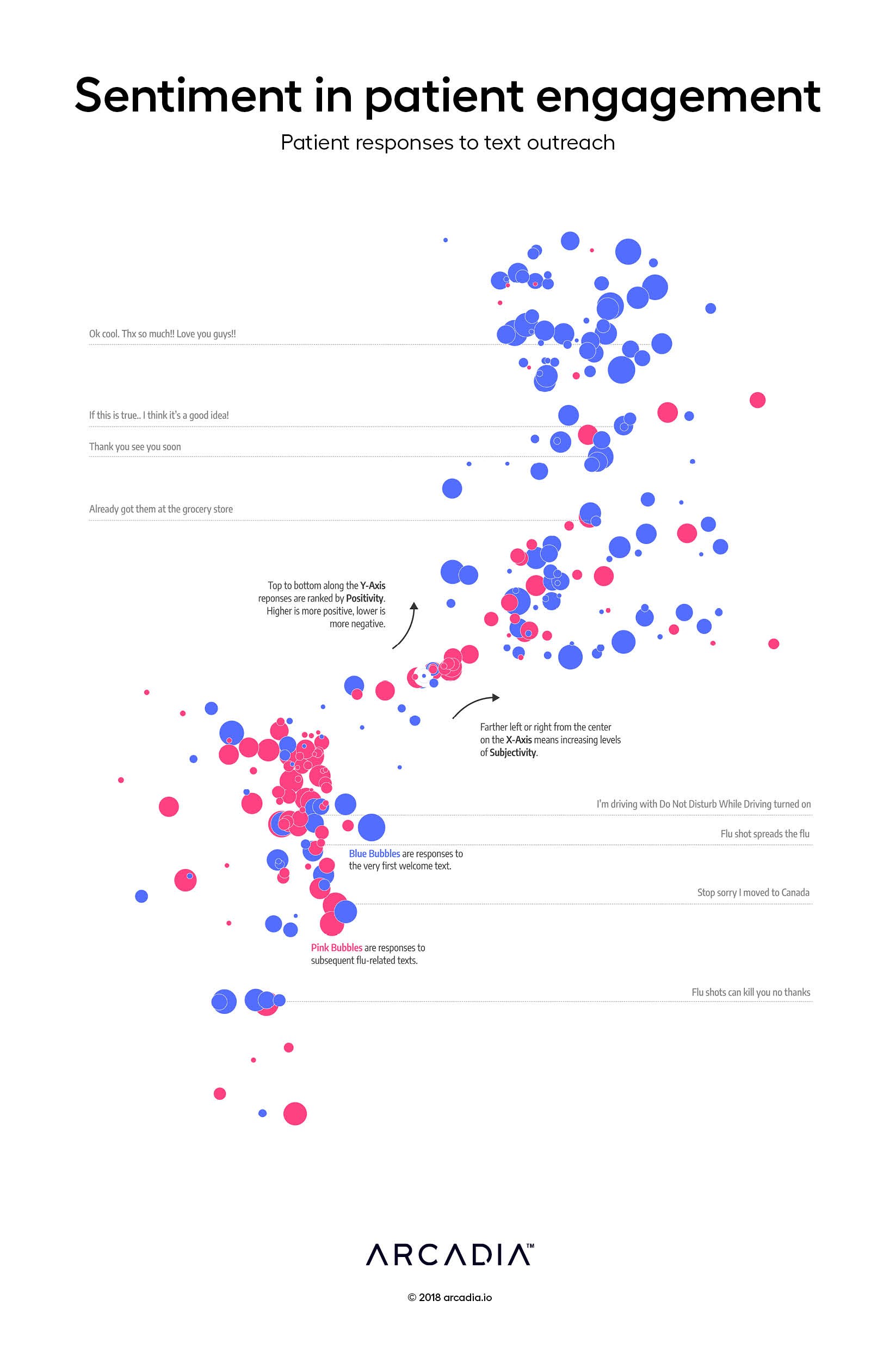Sentiment in patient engagement: Patient responses to text outreach

A challenge in conducting any outreach campaign is understanding the degree to which the message is received. This certainly applies to the care manager communicating one-on-one with a patient via text-based outreach — and it can be even more challenging when a healthcare organization wants to understand the response to a program. How well is a flu vaccine campaign being received? Are changes needed to better influence patients? One often overlooked line of communication — patient responses to the texts — could shed some light on these questions, thanks to sentiment analysis.
Sentiment analysis makes use of established machine learning techniques, in combination with natural language processing tools, to identify meaningful fragments of text, and associate them with known (trained) patterns representing modes of speech. Sometimes, the patterns identified are objective in nature — relaying information or merely providing a verbal “OK” — and sometimes the patterns are subjective, suggesting underlying emotion behind the text and a positive or negative emotional state.
In this visualization, the artist uses sentiment analysis to depict patient responses to text-based outreach, first from an introductory text (blue), and then for a flu vaccination campaign (pink). Responses are visualized as bubbles, with the size based on the number of similar responses. The most positive responses appear at the top; the most negative responses are at the bottom.
Responses to the initial outreach were generally more positive than responses to the flu vaccination campaign — some responses expressed frustration or opposition to vaccination programs in general — but this does not necessarily mean that the campaign was poorly received, or that the texting was not valuable. Rather, this may be recognized as a hidden and underutilized source of knowledge. For better or worse, our patients have discovered a new avenue for sharing their personal health story, and it is important, as always, to be listening.
VADER Analysis: Hutto, C.J. & Gilbert, E.E. (2014). VADER: A Parsimonious Rule-based Model for Sentiment Analysis of Social Media Text. Eighth International Conference on Weblogs and Social Media (ICWSM-14). Ann Arbor, MI, June 2014.
Details
Python, NLTK Toolkit, D3.js, with Illustrator
Data sourced from SMS campaign transmissions and responses, against VADER sentiment analysis tools
